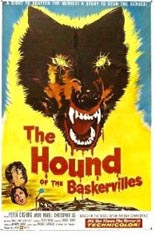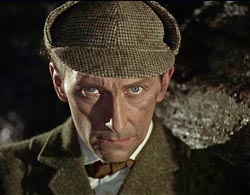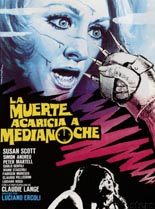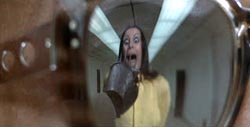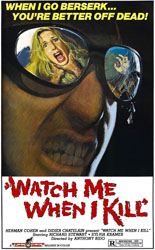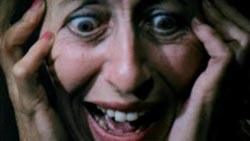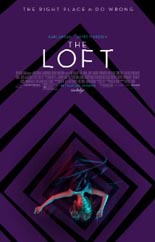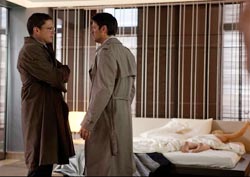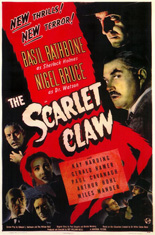
 One from the 14-film Sherlock Holmes franchise’s middle, The Scarlet Claw is the most overtly supernatural of the bunch, but we all know Holmes (Basil Rathbone) isn’t a believer in such things. The same can’t be said for Lord Penrose (Paul Cavanagh, 1953’s House of Wax), whose wife becomes the latest victim of a rumored marsh monster that has the village of La Mort Rouge gripped in fear.
One from the 14-film Sherlock Holmes franchise’s middle, The Scarlet Claw is the most overtly supernatural of the bunch, but we all know Holmes (Basil Rathbone) isn’t a believer in such things. The same can’t be said for Lord Penrose (Paul Cavanagh, 1953’s House of Wax), whose wife becomes the latest victim of a rumored marsh monster that has the village of La Mort Rouge gripped in fear.
Just like the following year’s Pursuit to Algiers, this flick stands at more of a B level than the earlier pictures, yet at 74 minutes, it’s so quick, it can’t help but be fun. As with all of them, it’s difficult not to want to watch at least two in a row.
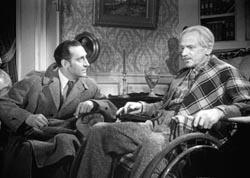 Rathbone makes an excellent Holmes, so much so that we tend to picture him when he think of the character. He enjoys a natural rapport with Nigel Bruce, too, although this Watson of the screen isn’t Sir Arthur Conan Doyle’s Watson of the page; here, the doctor is reduced to a bumbling, occasionally pigheaded sidekick, rather than the detective’s equal. That’s not really a complaint, but an observation.
Rathbone makes an excellent Holmes, so much so that we tend to picture him when he think of the character. He enjoys a natural rapport with Nigel Bruce, too, although this Watson of the screen isn’t Sir Arthur Conan Doyle’s Watson of the page; here, the doctor is reduced to a bumbling, occasionally pigheaded sidekick, rather than the detective’s equal. That’s not really a complaint, but an observation.
But here’s one complaint: Typical of the studio pictures of their era, these films are prone to musical numbers in which a character sings an entire song — or several — apparently because audiences liked that sort of thing. —Rod Lott

